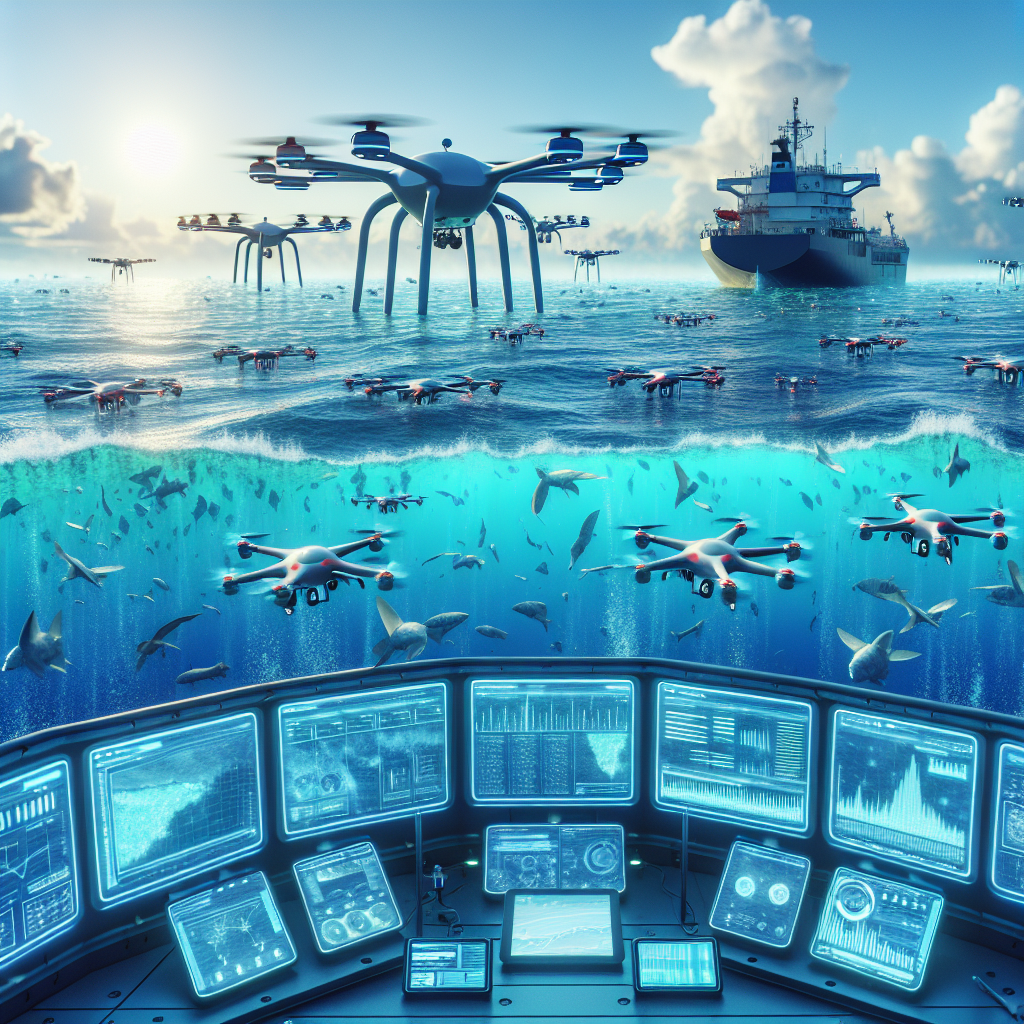The world’s oceans are facing a crisis. Pollution from various sources, including plastic waste, oil spills, and chemical runoff, is wreaking havoc on marine ecosystems and threatening the health of both marine life and humans. Fortunately, advances in technology, particularly artificial intelligence (AI), hold promise for monitoring and combating ocean pollution.
AI is revolutionizing the way we collect and analyze data, allowing us to better understand the scope and impact of ocean pollution. By harnessing the power of AI, researchers and environmentalists are able to track pollution in real-time, identify sources of contamination, and develop targeted solutions to mitigate its effects.
One of the key ways AI is being used to monitor and combat ocean pollution is through the use of autonomous vehicles, such as drones and underwater robots. These devices are equipped with sensors and cameras that can collect data on water quality, temperature, and the presence of pollutants. AI algorithms then analyze this data to pinpoint areas of concern and guide cleanup efforts.
For example, researchers at the University of California, San Diego, have developed an autonomous underwater vehicle called Slocum Glider that is being used to monitor ocean pollution in real-time. The glider is equipped with sensors that can detect pollutants such as oil and plastic, allowing researchers to track the movement of these contaminants and develop strategies to clean them up.
Another way AI is being used to combat ocean pollution is through the development of predictive models. By analyzing historical data on pollution levels and environmental factors, AI algorithms can forecast where pollution is likely to occur in the future. This allows authorities to take preemptive action to prevent pollution before it becomes a major problem.
In addition to monitoring and predicting pollution, AI is also being used to clean up contaminated areas. For example, researchers at the Ocean Cleanup project have developed a system that uses AI-powered drones to collect plastic waste from the ocean surface. The drones are equipped with cameras that can identify and target floating debris, allowing for more efficient cleanup efforts.
Overall, AI has the potential to revolutionize the fight against ocean pollution. By providing real-time data on pollution levels, predicting future contamination, and facilitating cleanup efforts, AI technology is helping to protect our oceans and preserve marine ecosystems for future generations.
FAQs:
Q: How does AI help monitor ocean pollution?
A: AI helps monitor ocean pollution by analyzing data collected from sensors and cameras on autonomous vehicles. By processing this data in real-time, AI algorithms can identify areas of concern and guide cleanup efforts.
Q: Can AI predict future pollution levels in the ocean?
A: Yes, AI can predict future pollution levels in the ocean by analyzing historical data on pollution levels and environmental factors. By using this data to develop predictive models, AI algorithms can forecast where pollution is likely to occur in the future.
Q: How is AI being used to clean up ocean pollution?
A: AI is being used to clean up ocean pollution by facilitating cleanup efforts through the use of autonomous vehicles equipped with sensors and cameras. These devices can identify and target pollutants, allowing for more efficient cleanup operations.
Q: What are the benefits of using AI to combat ocean pollution?
A: The benefits of using AI to combat ocean pollution include real-time monitoring of pollution levels, forecasting future contamination, and facilitating cleanup efforts. By harnessing the power of AI, researchers and environmentalists can better understand and address the challenges posed by ocean pollution.

